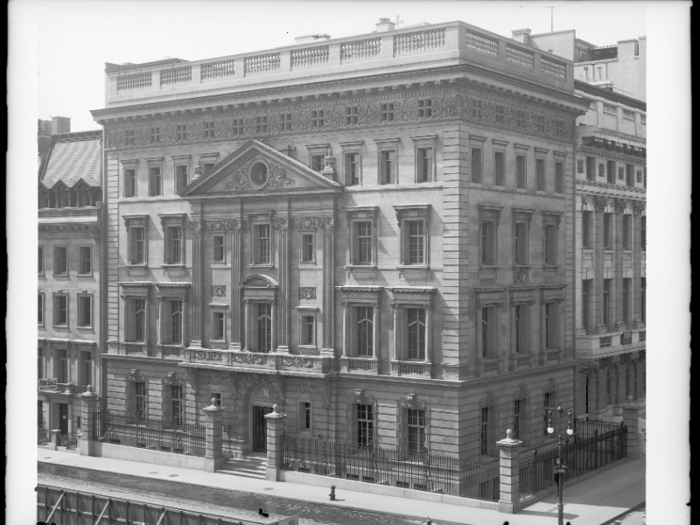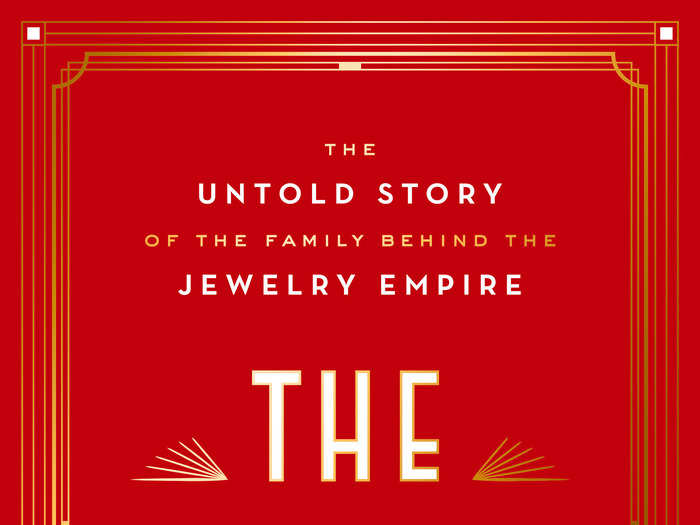- Home
- slideshows
- miscellaneous
- The story of how Cartier's iconic New York store was paid for in pearls
The story of how Cartier's iconic New York store was paid for in pearls
One evening, Maisie Plant and Pierre Cartier were seated next to each other at a dinner

"The new building is being transformed. The room dividers are being demolished, the ceiling full of holes, there is plaster all up the stairs but I am beginning to like our local future. We can start French luxury in New York!"

So wrote Pierre to Jacques as he poured his energies and funds into renovating the new building. Only too aware that war was still raging in Europe, he felt that focusing on the business was the best thing he could be doing. Investing now (letters between the brothers estimated the total renovation cost at $900,000, or $24 million today) meant reaping rewards later. And with sales in Paris and London at rock-bottom levels, it was up to him to focus on underpinning future profits from the safety of America.
Pierre had shopped around for architects. He asked both Louis and his sister-in-law for advice (her father had transformed a residential house on Place Vendôme in Paris into a bank). But eventually, he had selected a well-known American. William Welles Bosworth, who would go on to become a family friend, was instructed to create a store worthy of Cartier's distinguished clientele while maintaining a touch of the private house feel. The resulting store, Pierre insisted, must be attractive to American clients while remaining in keeping with the original Rue de la Paix showroom. It must still feel like Cartier.
Bosworth was not short of ideas, but ultimately this was Pierre's kingdom

Every detail — from the choice of the carpet to the wooden molding around the doors to the style of his desk— was run by him for approval. Cartier might be known for large gemstones, but it was above all a house of creativity and design: From the moment a client entered, they must know they were in an establishment of superior taste. Pierre may have lacked Louis' creative genius, but he was also an aesthete with a highly attuned sense of style. Several months after the refurbishment was completed, the Fifth Avenue Association awarded the house a gold medal for the best-transformed building in New York that year.
After months of renovations, on the morning of October 1, 1917, Pierre sent several of his employees ahead to set up in advance of his arrival

Edward Bell, his assistant, traveled the short distance between the old location and the new in Cartier's van, squeezed in between two police detectives on the front seat with boxes of jewels filling the back. Jules Glaenzer, meanwhile, drove a little car into which he miraculously crammed a heavy display case. The men arrived at the address at the allotted time, where several office staff were waiting to help them unload the items. Before long, all the precious cargo was piled up on the sidewalk just outside the new store.
The problem, they soon discovered, was that no one had the keys. Everyone in the group was under the impression that someone else had them, whereas in fact the builders had forgetfully walked off with them the previous day. They had to wait, the group of them, beside the little red boxes filled with rubies, emeralds, and diamonds, out on the sidewalk, while an office boy was dispatched to track the keys down. Glaenzer directed the situation with characteristic theatrical flair. The ladies of the office, in their large skirts, were instructed to make a circle around the precious cargo. Jules himself, trying to appear nonchalant, stood watch, fervently hoping that his society friends would not choose that moment to walk past. Cartier salesman Edward Bell later recalled "the feeling of relief when we were all safely inside ... We have now settled down to an effective organization, and Monsieur Pierre is delighted with the location — where it is certainly a pleasure to work — and I cannot but feel that Monsieur Pierre's satisfaction is the moral result of endless difficulties successfully overcome."
From the book "THE CARTIERS: The Untold Story of the Family Behind the Jewelry Empire" by Francesca Cartier Brickell. Copyright © 2019 by Francesca Cartier Brickell. Published by Ballantine Books, an imprint of Random House, a division of Penguin Random House LLC. All rights reserved.
Popular Right Now
Popular Keywords
Advertisement